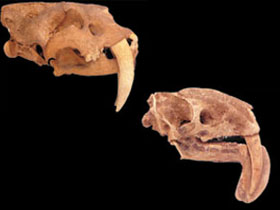In biology, structural similarities among different living species are referred to as homologous. Evolutionists attempt to use these similarities as evidence for evolution. Pointing to homologous organs in different life forms, they maintain that these species are descended from a common forebear. (See Homologous organs.) Yet in order for evolutionist claims regarding homologous organs to be taken seriously, these organs would have to be coded by similar DNA codes. Yet these homologous organs are generally determined by different genetic (DNA) codes.
In addition, similar genetic codes in different life forms also correspond to very different organs! In his book Evolution: A Theory in Crisis, the Australian professor of biochemistry Michael Denton describes the predicament represented by the evolutionist interpretation of homology:
  At the molecular level, no organism is the ancestor of any other, nor more primitive or advanced than any other. |
Homologous structures are often specified by non-homologous genetic systems, and the concept of homology can seldom be extended back into embryology.211
In order for that same claim to be taken seriously, the embryological development process of these similar structures—in other words, the phases of development in the embryo in the mother’s womb—have to be parallel to one another. Yet the embryological stages for similar organs are different in all living things.
Genetic and embryological research has shown that the concept of homology, which Darwin took as proof that living things are descended from a common ancestor, does not in fact provide any backing for such a definition. Thus it is that science has revealed the unrealistic nature of yet another Darwinist thesis.
The evolutionist claim regarding homology is not only invalid at the level of organs, but also at the molecular level. (See Molecular homology thesis, the.) There are enormous molecular differences between living things that outwardly appear very similar and closely related to one another. Professor Michael Denton comments:
Each class at a molecular level is unique, isolated and unlinked by intermediates. Thus, molecules, like fossils, have failed to provide the elusive intermediates so long sought by evolutionary biology . . . At a molecular level, no organism is “ancestral” or “primitive” or “advanced” compared with its relatives . . . . There is little doubt that if this molecular evidence had been available a century ago. . . the idea of organic evolution might never have been accepted. 212211 Michael Denton, Evolution: A Theory in Crisis, p. 145.
212 Ibid., pp. 290-291.


